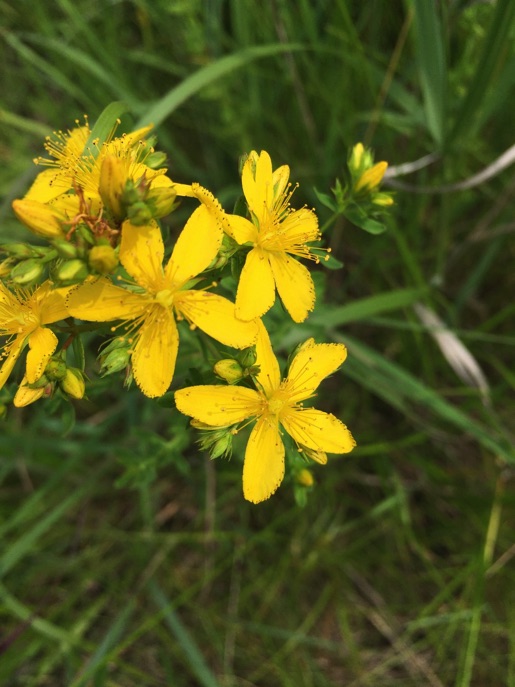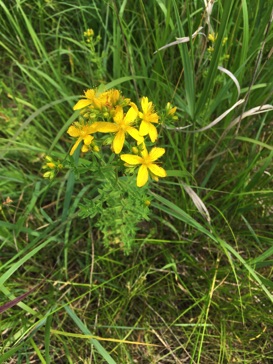Common St. Johnswort
Hypericum perforatum

A common perennial weed, this oft-branching plant has small ovate leaves (about 1 inch long) with smooth edges, and produces clusters of yellow flowers, each flower about 3/4 inch or a bit more across. Each flower has five ovate petals and a tuft of numerous stamens in the center; distinctive to this species of Hypericum are tiny black dots that are found on the edges of the petals (in the photo at left, many appear to be small tears in the petal edge, but they are clearly visible on the upturned edge of the blossom at top center). The leaves also have tiny translucent cells, which when held up to light make the leaves appear to be pierced, hence the Latin name.
A Eurasian import, Common St. Johnswort is considered an invasive species in many areas because it can be toxic to animals. Extracts from the plant have been used for many centuries in folk medicine. The name is said to come either from the fact that it blooms in Europe at the time of the Feast of St. John (June 24), or from use of its extract to heal wounds by the medieval Knights Hospitaller (Order of St. John).
1-3 feet, sun - partial sun.
Summer (June-September).
A small specimen; plants seldom reach their full possible height of 3 feet.
22 June 2020.
Common St. Johnswort, 22 June 2020.
